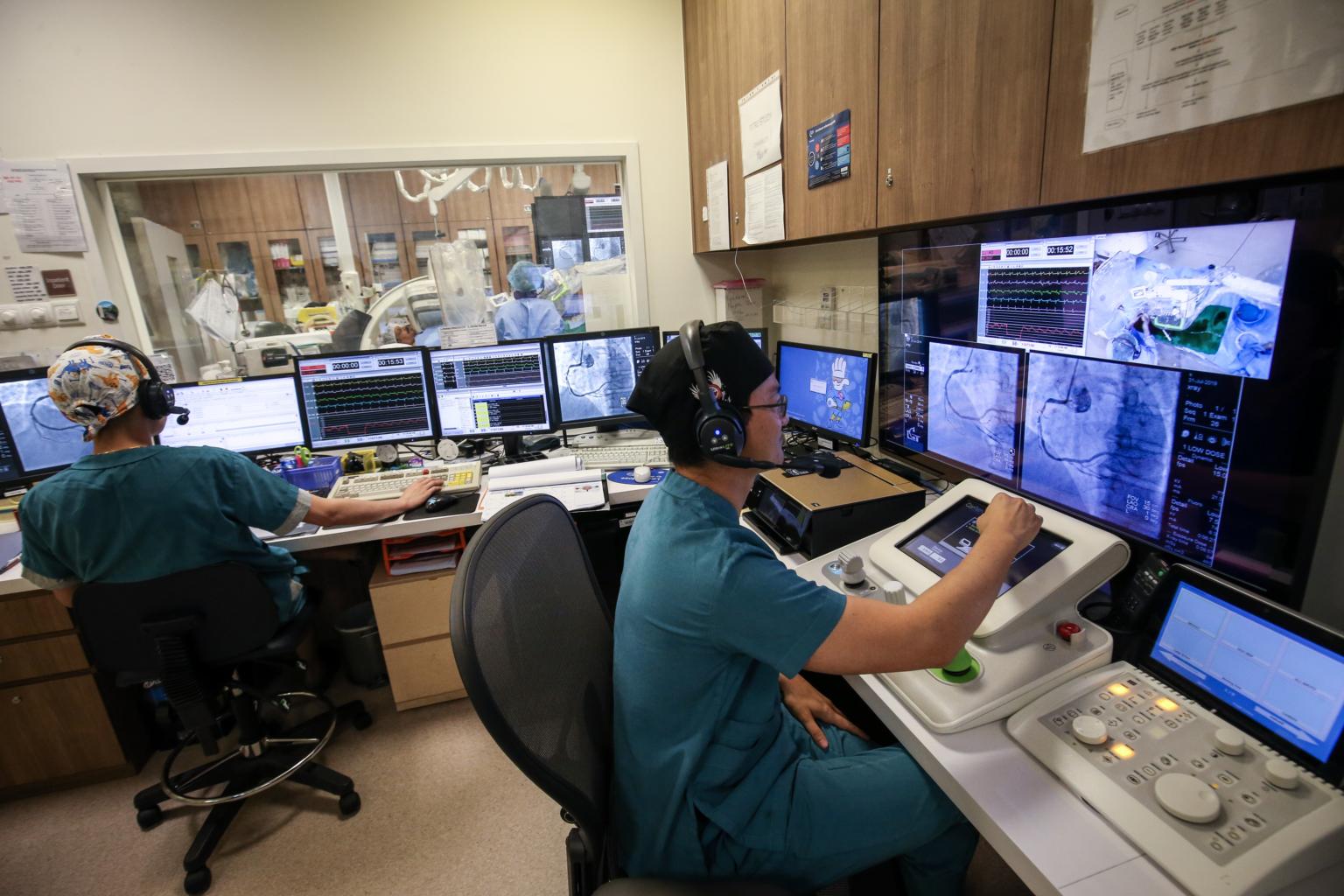Singapore heart surgeons first in South-east Asia to use robot assistants
Sign up now: Get ST's newsletters delivered to your inbox

The robot assistants allow doctors to perform an angioplasty more efficiently and precisely. The surgeon controls the robotic arm from a workstation outside the operating theatre. The artery is magnified much further, so precise movements can be made to position the stent.
PHOTO: CMG
Cheryl Teh
Follow topic:
SINGAPORE - Heart specialists in Singapore now have an extra set of helping hands in the operating theatre.
Their new assistant comes in the form of a robotic arm which assists them in minute but vital surgical manoeuvres.
It allows doctors here to more efficiently and precisely perform an angioplasty.
The process sees them place stents - small tubes that can relieve blocked or narrow arteries by propping them open - in a patient's heart.
A team of doctors at Tan Tock Seng Hospital's Interventional Cardiology last December became the first in South-east Asia to use this new technology to perform robotic-assisted angioplasty. More than 70 patients have since received this treatment at the hospital, with positive results.
Dr Paul Ong, senior consultant and head of the interventional cardiology department at Tan Tock Seng revealed the development to The Straits Times on Wednesday (July 31).
The robotic arm allows him to position the stent with accuracy down to the millimetre, reducing the chances of human error.
This technology might allow doctors to complete operations faster and more accurately, as compared to inserting the stent through conventional surgery where doctors move the stent manually, guided by X-ray visualisations of the heart.
"With this technology, the surgeon controls the robotic arm from a workstation just outside the operating theatre. The artery is magnified much further, so we can make precise movements to position the stent," said Dr Ong.
The stent is inserted to prop open blood vessels that might be clogged by fatty deposits, preventing the arteries from closing up, which would impede the healthy flow of blood through the heart.
Dr Ong added: "When stents are one millimetre too long, they might block branches of blood vessels adjacent to the artery we are operating on. But when the stent is too short, perhaps more stents might be required, making the operation more complicated and costly for the patient. This machine allows us to position the stent with enhanced accuracy, to create better outcomes for our patients.
"In Singapore, one out of three deaths is due to heart disease or stroke, and with an ageing population, we are likely to see more patients with these diseases."
The team plans to explore the full potential of performing surgeries remotely, as well as the use of artificial intelligence to automate parts of the procedure, which may shorten the training curves of heart specialists.

